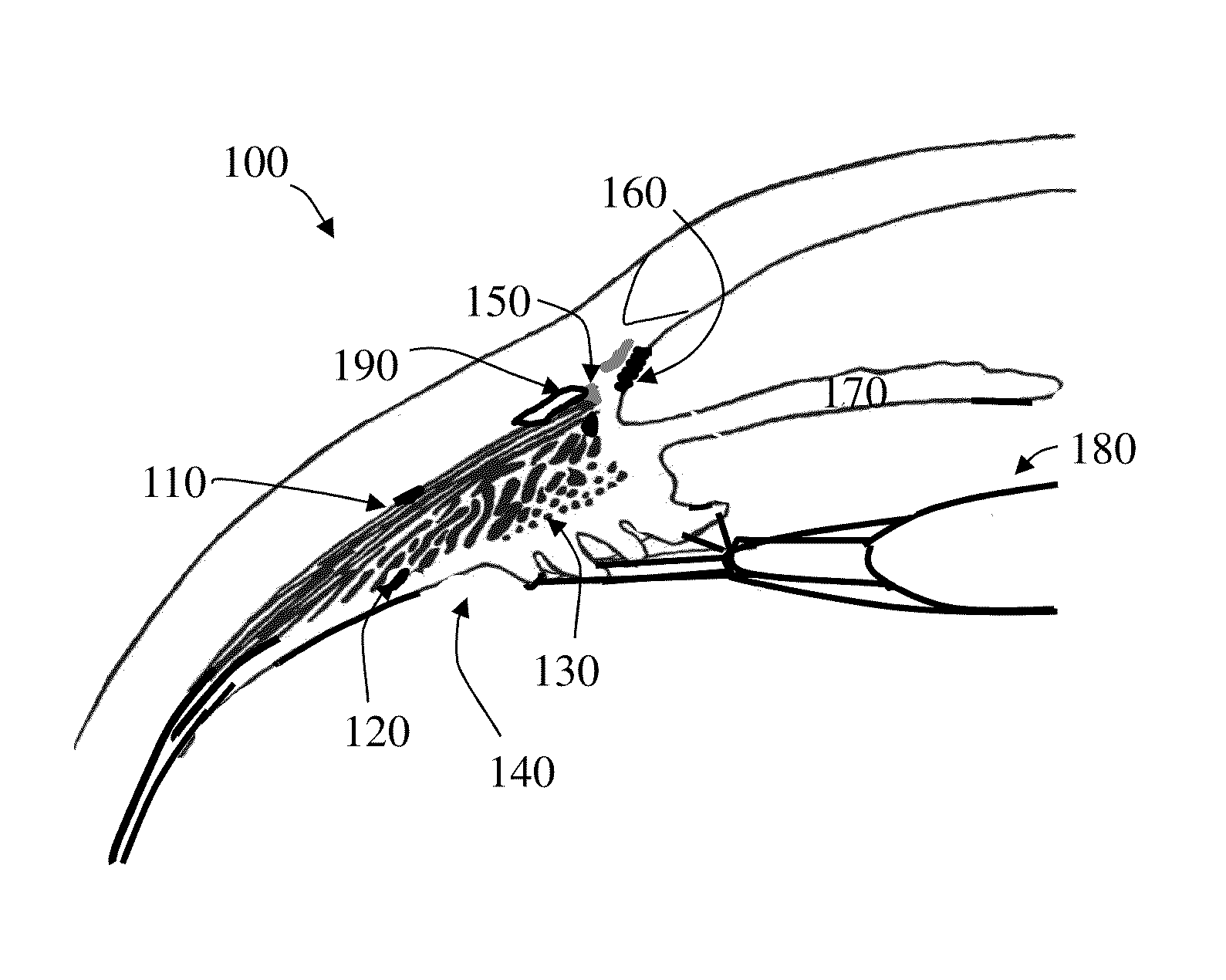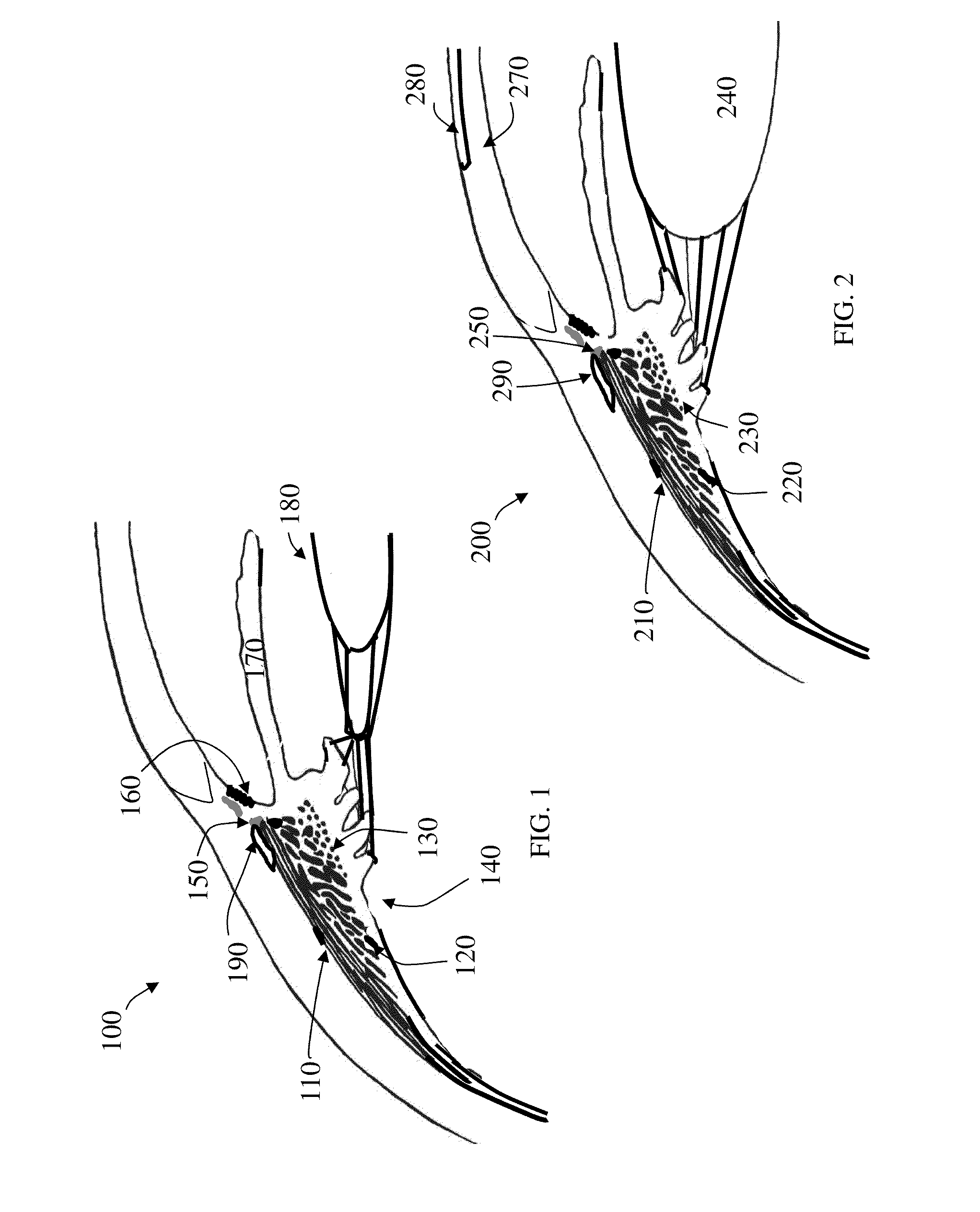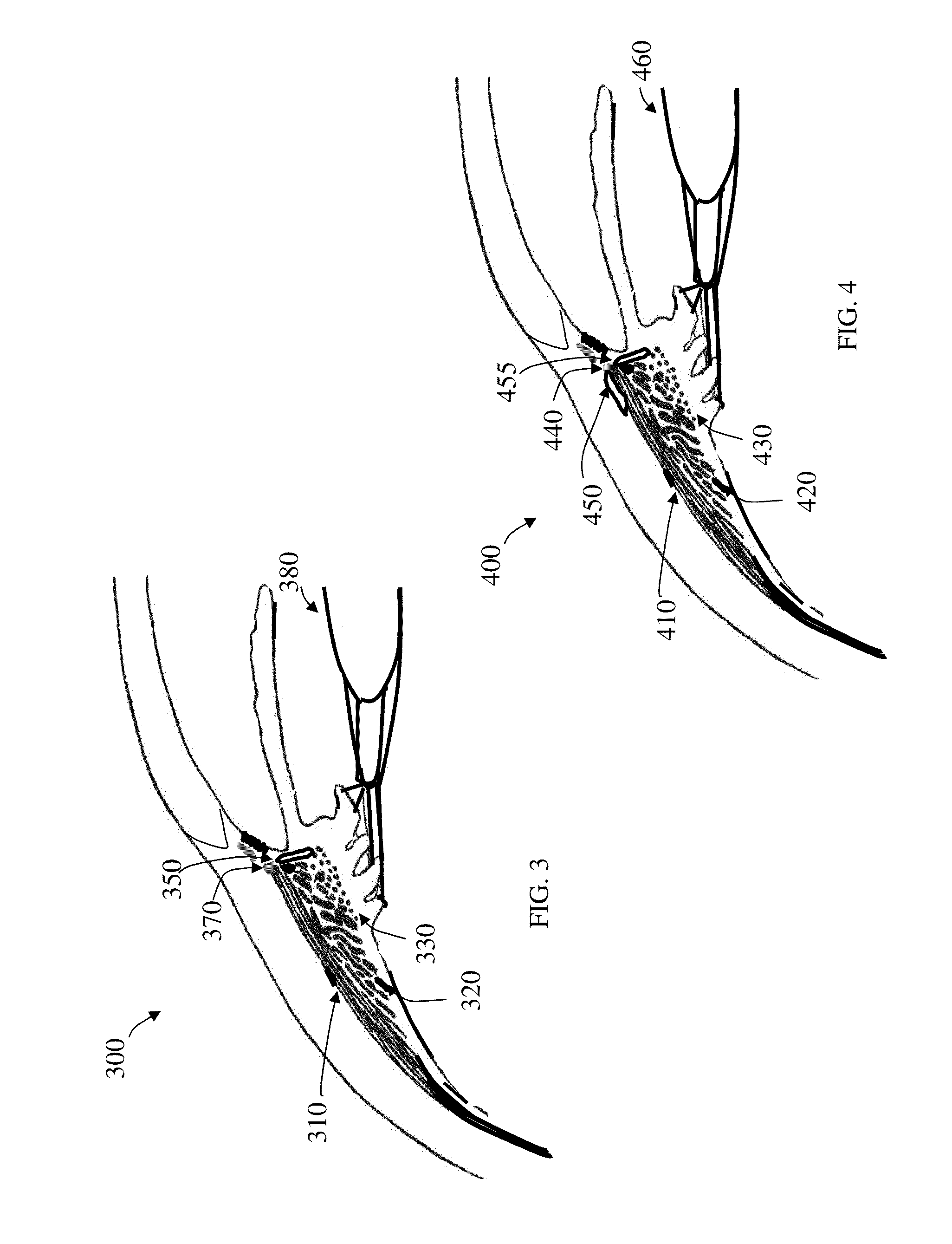Presbyopia correcting wireless optical system
a wireless optical system and presbyopia technology, applied in the field of presbyopia correction wireless optical system, can solve the problems of additional uncertainty between individual differences, inability to accurately detect the individual differences, so as to reduce the processing power and reduce power consumption.
- Summary
- Abstract
- Description
- Claims
- Application Information
AI Technical Summary
Benefits of technology
Problems solved by technology
Method used
Image
Examples
Embodiment Construction
[0053]FIG. 1 illustrates a portion 100 of eye anatomy responsible for the accommodation process shown as the eye's cross section. The FIG. 1 includes implanted aphakic intra-ocular lens 180 that replaces natural lens. The ciliary muscles accommodating apparatus is confined by ciliary body 140 and is divided into longitudinal fibers 110, radial fibers 120 and circular fibers 130 each having different orientation and, as a result, contracting in different planes. At the front, the longitudinal fibers 110 attach to the scleral spur 150, whereas the radial 120 and circular fibers 130 attach to the back of the trabecular meshwork 160 and posterior wall of the iris 170. Radial fibers 120 are composed of few thin fibers that contracts during disaccommodation (from near to far focus) to focus far objects by pulling out the equatorial part of the eye's capsular bag of the natural lens. Most of circular fibers 130 run in a circle around the ciliary body 140 concentrically with the root of iri...
PUM
 Login to View More
Login to View More Abstract
Description
Claims
Application Information
 Login to View More
Login to View More - R&D
- Intellectual Property
- Life Sciences
- Materials
- Tech Scout
- Unparalleled Data Quality
- Higher Quality Content
- 60% Fewer Hallucinations
Browse by: Latest US Patents, China's latest patents, Technical Efficacy Thesaurus, Application Domain, Technology Topic, Popular Technical Reports.
© 2025 PatSnap. All rights reserved.Legal|Privacy policy|Modern Slavery Act Transparency Statement|Sitemap|About US| Contact US: help@patsnap.com



